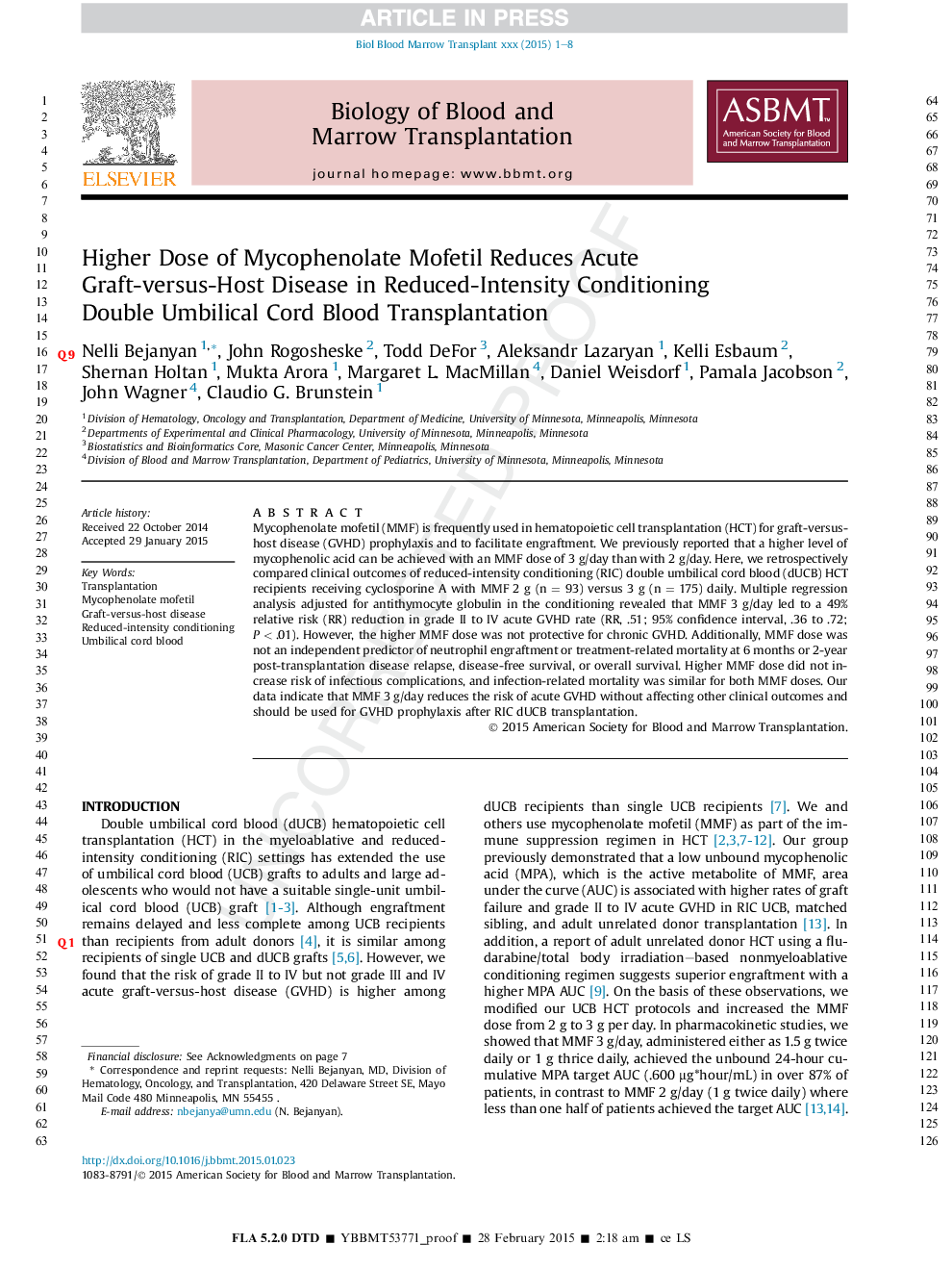| Article ID | Journal | Published Year | Pages | File Type |
|---|---|---|---|---|
| 8431550 | Biology of Blood and Marrow Transplantation | 2015 | 8 Pages |
Abstract
Mycophenolate mofetil (MMF) is frequently used in hematopoietic cell transplantation (HCT) for graft-versus-host disease (GVHD) prophylaxis and to facilitate engraftment. We previously reported that a higher level of mycophenolic acid can be achieved with an MMF dose of 3 g/day than with 2 g/day. Here, we retrospectively compared clinical outcomes of reduced-intensity conditioning (RIC) double umbilical cord blood (dUCB) HCT recipients receiving cyclosporine A with MMF 2 g (n = 93) versus 3 g (n = 175) daily. Multiple regression analysis adjusted for antithymocyte globulin in the conditioning revealed that MMF 3 g/day led to a 49% relative risk (RR) reduction in grade II to IV acute GVHD rate (RR, .51; 95% confidence interval, .36 to .72; P < .01). However, the higher MMF dose was not protective for chronic GVHD. Additionally, MMF dose was not an independent predictor of neutrophil engraftment or treatment-related mortality at 6 months or 2-year post-transplantation disease relapse, disease-free survival, or overall survival. Higher MMF dose did not increase risk of infectious complications, and infection-related mortality was similar for both MMF doses. Our data indicate that MMF 3 g/day reduces the risk of acute GVHD without affecting other clinical outcomes and should be used for GVHD prophylaxis after RIC dUCB transplantation.
Keywords
Related Topics
Life Sciences
Biochemistry, Genetics and Molecular Biology
Cancer Research
Authors
Nelli Bejanyan, John Rogosheske, Todd DeFor, Aleksandr Lazaryan, Kelli Esbaum, Shernan Holtan, Mukta Arora, Margaret L. MacMillan, Daniel Weisdorf, Pamala Jacobson, John Wagner, Claudio G. Brunstein,
